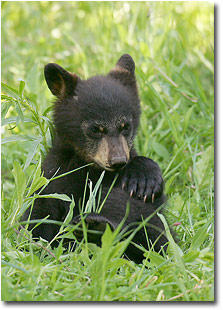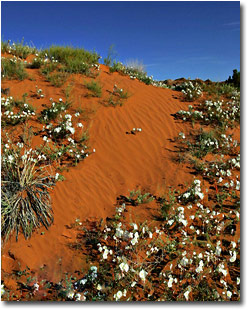Our Longest SeasonText and photography copyright Jess Lee. All rights reserved.
As I write this I am home in Idaho, not far from Yellowstone and the Tetons where the snow is falling. Frankly, it is getting old. I know from the Weather Channel that many of you in the north and east must feel the same. Luckily all is not as drab and bleak as a stormy winter sky. Just think in Florida and the Gulf states birds are beginning to nest. In the desert southwest the rains have brought a once-in-a-decade flower bloom that started the end of January. Our longest season has begun.
Winter can be refreshing and crisp, or bone chilling and bleak depending on your attitude and latitude. Summer is warm with soft nights and lazy days but for many it is fleeting. Autumn for the nature photographer seems to pass in a blur with too many things happening at once. But continent wide, spring can run from January to July. Sure, this defies the calendar definition but who can deny that nesting birds in January or blooming flowers on the edge of a receding snow field in July is not spring time?
 So how do you take advantage of all of this opportunity? Well it depends on your subject. I tend to separate spring into two major categories; Babies and Blooms.
So how do you take advantage of all of this opportunity? Well it depends on your subject. I tend to separate spring into two major categories; Babies and Blooms.
For photographers concentrating on wildlife, things can be simpler than for someone trying to capture the peak of the bloom. In the mammal world birth times are pretty predictable regardless of the weather. Bison, elk, deer and other large grazers have their young within a narrow time frame with little or no regard for weather. Habitat conditions as determined by weather can affect the number of births, but the time frame is generally consistent year after year. Predator population tends to vary with the size of the prey base but again the time frame of the birth and visibility of young is generally the same each year. Bears and hibernators are rather variable with their emergence depending on the weather. Could it be Punxsutawney Phil really does know?
Bird migrations are also consistent from year to year but local storms or a late thaw in the north ranges can slow migration when food sources are covered. Still birds need to be at their nesting locations in time to have their fledglings ready for the southward migration. So your best bet with wildlife is pick your subject, research online (NPN has excellent archives and helpful members) and very importantly, call ahead.
Photographers seeking the peak of spring blooming face a more challenging situation. In many places the bloom just doesn’t happen every year. At best, conditions can vary widely due to weather. This makes long range planning very difficult for spring landscape photography. Again check historical records for the area you are interested in photographing. Wild flower hot lines seem to be available every where these days.
If you don’t have any ideas where to go then the possibilities are unlimited. The national and state parks are classic locations but don’t overlook non-cultivated farm lands or wild lands anywhere. While this may not be a great year, the Great Plains can provide unique springtime views in a moist year. I have even heard they have flowers in Texas, speaking of birds and blooms.
This year is special and will be long remembered by landscape photographers willing to travel. We are the beneficiaries of an uncommon event. Unusually heavy moisture in the southwest is bringing a bounty of wildflowers that could be a once-in-a-decade or longer event. If you ever wanted to photograph the desert in bloom this is a great chance.
How do I know this will be a great year in the desert southwest? Because it has already started. The low desert of southern California just east of San Diego is usually one of the first places to bloom. The rains have been plentiful to say the least and the temperatures have been relatively cool. All of this only increases the length of bloom. Forecasts indicate that even if the moisture stopped now this would be an above average year. It is “f22 and be there” time.
 So where are the best areas, and even more important, when is the best time to go? Generally the southwest desert bloom goes something like this: in a normal year (whatever that is) Anza Borrego is usually the first desert blooming area and it may well be past its peak by the end of February. About the time Anza is peaking Death Valley will be getting a good start and can go past the end of March. One of the rangers at Death Valley is on record saying, this could be the best bloom in Death Valley in the past 50 years. Mojave National Preserve and Joshua Tree National Park will be coming along in March when the lower elevation parks move past their peak.
So where are the best areas, and even more important, when is the best time to go? Generally the southwest desert bloom goes something like this: in a normal year (whatever that is) Anza Borrego is usually the first desert blooming area and it may well be past its peak by the end of February. About the time Anza is peaking Death Valley will be getting a good start and can go past the end of March. One of the rangers at Death Valley is on record saying, this could be the best bloom in Death Valley in the past 50 years. Mojave National Preserve and Joshua Tree National Park will be coming along in March when the lower elevation parks move past their peak.
In Arizona the bloom follows the same low to high elevation with the valley of the sun around Phoenix beginning to bloom about the same time as the peak in the lower elevations of the southern Californian desert. So you can expect things to be well underway by the third week in February and in a heavy moisture year like this to continue through March.
As with spring flowers every where, if you get to your intended location and find the flowers are tapering off just follow the bloom uphill. Actually this is my favorite technique for finding the bloom. I prefer to find the areas beginning to bloom then work the landscape selecting the best background.
Another tip is that midday may not be the best scouting time for desert blooms since many desert flowers close during the brightest and driest time each day.
One of the best places to check for desert wildflower reports on the web is Desert USA. Check the Desert USA website for updates but remember these are historical accounts. The best predictions will come from calling the location you want to visit. With the variables of moisture and temperatures it can be gamble to plan for the best location. So if you are going on your own do your home work, be flexible and most of all, enjoy!
Editor's note - visit Jess's website and online portfolio to view more of his work.
JL-NPN 1136
Comments on NPN spring nature photography articles? Send them to the editor.


| 


